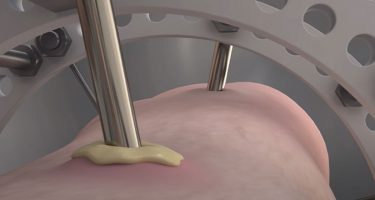LRS Advanced™
THIS INFORMATION IS FOR HEALTHCARE PROFESSIONALS ONLY
THIS INFORMATION IS FOR HEALTHCARE PROFESSIONALS ONLY
Proximal varus or valgus deformity in a short tibia; LRS ADVanced (53000 series) with OF-Garches T-Clamp.
(a) Complete osteotomy performed. Initial lengthening in line of deformity.
(b) Progressive correction of angulation with further lengthening as needed.
Caution: Resect at least 1 cm of fibula; distal syndesmosis screw.
Peroneal nerve: no acute correction of valgus deformity.

